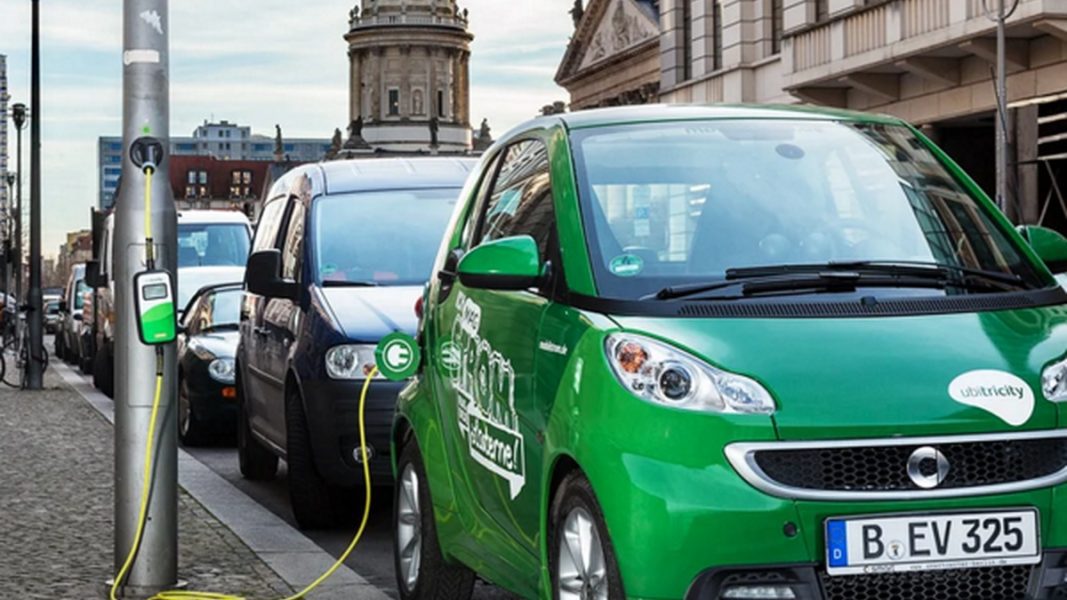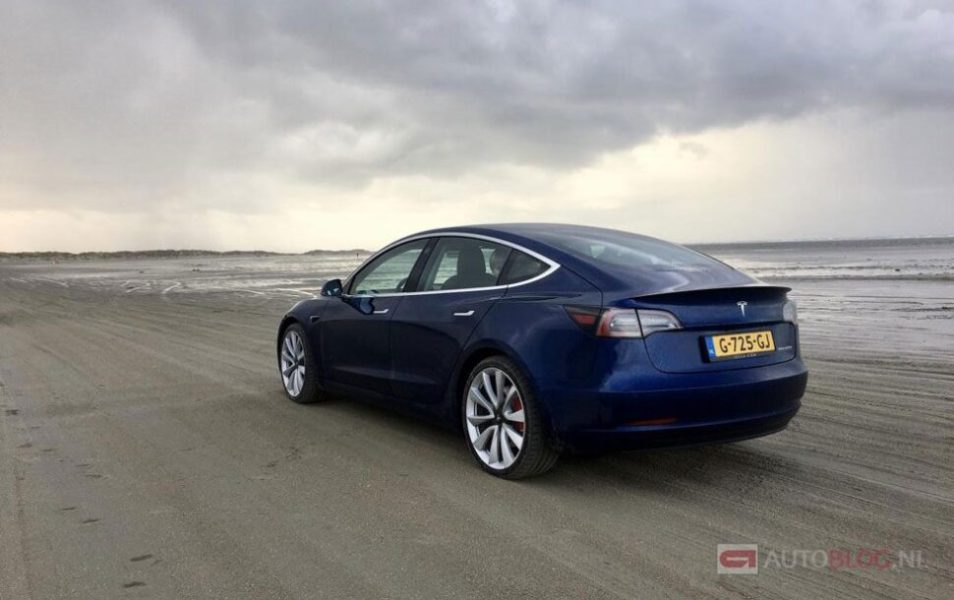
Adding electric vehicles
Content

Electric vehicles are often more expensive than gasoline and diesel vehicles. However, for those who drive private kilometers in a company car, the opposite is true. Reason: slower addition rate. How exactly is this addition calculated? How are things now? What does the near future look like? In this article, we're going to tell you everything you need to know about the electric vehicle add-on.
How does addition work?
First, how does addition actually work? The add-on comes into play when you drive more than 500 km a year privately in a company car. The tax authorities regard this as wages in kind. So you have to pay tax on this. Therefore, a certain amount of the value of the car must be added to the income: an increase.
To determine the surcharge, a percentage of the tax base or list price is taken. For all fossil fuel vehicles, the additive is currently 22%. This also applies to hybrids, plug-in hybrids and electric vehicles with a range extender. In Year 2, the reduced rate of 2021% will only apply to vehicles that do not emit CO12 at all. In addition to electric vehicles, this also includes hydrogen-powered vehicles. This rate is valid for five years after the first admission (on the day the car is “registered”). After that, the rules in force at that time will apply.
The tax value includes VAT and BPM. Factory installed accessories also count, but dealer installed accessories do not. Repair and registration costs are also not included. Thus, the financial value is below the recommended retail price.
For electric vehicles registered in 2020, a reduced surcharge of up to € 40.000 applies. The normal rate of 22% will be charged on the part of the catalog value that exceeds this amount. If the car is worth 55.000 12 euros, 40.000% refers to the first 22 euros and 15.000% to the remaining XNUMX XNUMX euros. We will provide a detailed calculation example later in this article to clarify this.
You can read more about leasing in general in the article on leasing an electric vehicle.
Until 2021
The addition rules change regularly. There was a much smaller markup charged for registrations in 2020 for electric vehicles, namely 8%. This additional interest also applies up to 45.000 € 40.000 instead of 60 €. To reap the benefits of the lower markup, business drivers bought massively electric vehicles late last year, or, of course, entered into a business lease to do so. For those who purchased a vehicle last year, the then current rate will remain in effect for XNUMX months, regardless of rate changes.
In 2010, the government introduced an additional benefit for zero-emission vehicles for the first time. The increase for electric vehicles was still 0% then. In 2014, this figure was increased to 4%. This continued until 2019. In 2020, there was an increase to 8%. In 2021, this figure was again increased to 12%.
On 2020
The increase from 4% to 8% and then to 12% is part of a gradual increase as called for in the Climate Agreement. Electric vehicles will grow by 2026% in 22. Until that time, the additive will increase slightly each time (see table). The addition has been increased slightly this year and will happen again next year. Thereafter, the premium on electric vehicles will remain at 16% for three years. In 2025, the surcharge will be increased again by 1% before the fringe benefit disappears in 2026.
The maximum catalog value this year has been reduced from 45.000 € 40.000 to 2025 € 2026. This catalog value will be used up to and including year XNUMX. From XNUMX onwards, the reduced rate will no longer be present and therefore the threshold will no longer apply.
A full overview can be seen in the table below. 2019 was also included for comparison. These are plans as they are, but they are subject to change. The Climate Agreement states that additional rules are reviewed annually and adjusted as necessary.
| year | Addition | Threshold value |
| 2019 | 4% | €50.000 |
| 2020 | 8% | €45.000 |
| 2021 | 12% | €40.000 |
| 2022 | 16% | €40.000 |
| 2023 | 16% | €40.000 |
| 2024 | 16% | €40.000 |
| 2025 | 17% | €40.000 |
| 2026 | 22% | - |
Additional (plug-in) hybrids
What about plug-in hybrids? As previously mentioned, they can no longer count on additional benefits. The normal rate of 22% applies to this type of vehicle. In the past, hybrids still had the upper hand. The condition was that CO2 emissions should be less than 50 grams per kilometer. For example, the Porsche 918 Spyder had CO2 emissions of 70 grams / km, so the PHEV fell out of the boat due to low consumption. Medium-sized PHEVs with a modest combustion engine are fine.
A reduced rate of 2014% was applied for these vehicles in 2015 and 7. For example, thanks to this measure, the Mitsubishi Outlander PHEV has become very popular. In 2014, the increase was even 0%, so no distinction was made between electric vehicles and hybrids if the car had CO50 emissions of less than 2 grams.
1: Hyundai Kona Electric

2020 add-on
To get an idea of the cost, let's calculate the additive for two cars. First, let's take a popular lease car under € 45.000: the Hyundai Kona. This model is also available with both a gasoline engine and a hybrid, but we are talking about an all-electric option right now. The 64 kWh Comfort version has a catalog value of € 40.715 XNUMX.
Since this amount is below the threshold of € 45.000, a reduced surcharge of 8% is applied to the entire amount. This amounts to € 3.257,20 gross per year or € 271,43 per month. This is an additional amount on which tax must be paid.
The amount of tax depends on the tax category. In this example, we assume that the annual salary is less than 68.507 € 37,35. The tax rate currently applied to this group is 271,43%. With a gross increase of € 101,38, you will end up paying € XNUMX per month.
| Catalog value | €40.715 |
| Percentage of addition | 8% |
| Gross additive | €271,43 |
| The tax rate | 37,35% |
| Pure addition | €101,38 |
2019 add-on
Last year, the gross increase for EVs at this price point was still half, thanks to a 4% increase. V net the addition, however, was not exactly half, because the tax rate for income from 20.711 68.507 to 2019 51,71 euros was slightly higher at the time. With this data, the calculation gives a net gain in the year XNUMX of € XNUMX per month.
2021 add-on
Next year the percentage will increase to 12%. The tax rate also changes, although the difference is limited. Another important one for this car: the threshold value is reduced from 45.000 40.000 to 40.715 715 euros. The catalog value of 22 2021 euros is slightly higher than this. This is why a full supplement of 153,26% must be paid for the last € XNUMX. The monthly surcharge is € XNUMX in the year XNUMX with the same car and the same income.
It is also interesting to know that without the additional benefit – at a rate of 22% – the net increase would be 278,80 euros, based on current tax rates. The addition of electric driving will be at this level in 2026. By then, however, electric vehicles will also become cheaper.
Electric vs. petrol
Since the Kona is also available in a petrol version, it's interesting to add this addition to this variant. Unfortunately, a completely fair comparison is not possible because the most powerful petrol variant still has less power than the electric one. The 1.6 T-GDI has 177 hp and the Electric 64 kWh has 204. For the cheapest version of the 1.6 T-GDI, you pay a net increase of 194,83 euros per month. Even with the increased additive, the more powerful Electric is still significantly cheaper.
| Kona Electric 64 kWh | 2019 | 4% | €51,71 |
| 2020 | 8% | €101,38 | |
| 2021 | 12% | €153,26 | |
| 22% | €278,80 | ||
| Kona 1.6 T-GDI | 22% | €194,83 |
Example 2: Tesla Model 3

2020 add-on
The Tesla Model 3 was number one last year when it came to the most popular rental cars. Unlike Kona, the catalog price of this car exceeds the threshold of 45.000 euros. The cheapest version is the Standard Range Plus. Its catalog price is € 48.980 XNUMX. This complicates the calculation a bit.
A rate of 45.000% applies to the first € 8. This corresponds to a gross increase of € 300 per month. The remaining € 3.980 is subject to the full rate of 22%. This amounts to 72,97 euros per month. Thus, the total value added is € 372,97.
For this car, we assume that the income exceeds 68.507 49,50 euros and the corresponding tax rate is 184,62%. This gives you a net increase of € 335,39 per month. By comparison: without the added benefit, the net supplement would have been € XNUMX.
| Total catalog value | €48.980 |
| Catalog value to the threshold | €45.000 |
| Percentage of addition | 8% |
| Addition | €300 |
| Remaining catalog value | €3.980 |
| Percentage of addition | 22% |
| Addition | €72,97 |
| Total gross addition | €372,97 |
| The tax rate | 49,50% |
| Pure addition | €184,62 |
Supplement 2019 and 2021
Those who bought a Model 3 last year can still get a 4% increase in electric vehicles. What was also an important difference for this particular version: then the threshold was still 50.000 € 4. Thus, this 68.507% refers to the total list value. The tax rate on income above EUR 84,49 279,68 was then still slightly higher. This resulted in a net increase of € 12 per month. Next year, the premium will be € XNUMX per month with an increase of up to XNUMX%.
| Tesla Model 3 Standard Range Plus | 2019 | 4% | €84,49 |
| 2020 | 8% | €184,62 | |
| 2021 | 12% | €279,68 | |
| 22% | € 444.49 | ||
| BMW 330i | 22% | €472,18 |
Electric vs. petrol
How much does a comparable gasoline vehicle cost additionally? Since the Model 3 belongs to the D-segment, the car can be compared, for example, to the BMW 3 Series. The closest variant is the 330i with 258 hp. This is 20 hp. more than Standard Range Plus. At the same tax rate as before, we get a net increase of € 330 per month for the 472,18i. Given the higher list price, the 330i is always slightly more expensive than the Model 3 Standard Range Plus, but the 2020i will currently be at least 330x more expensive for a business driver in 2,5. Now you understand why you see the Model 3 more often than the new BMW 3 Series.
Summing up
In connection with the increase in the surcharge for electric vehicles from 4% to 8%, this year the first step was taken to eliminate additional tax breaks. The threshold cost has also been lowered from 50.000 45.000 to 8 XNUMX euros. Thus, compared to last year, the financial advantage has already diminished significantly. Regardless, the higher catalog value of EVs is more than offset by the XNUMX percent markup. In addition, a business driver is often at least half the price of a comparable gasoline vehicle.
However, the financial advantage will shrink until the increase reaches the level of gasoline and diesel vehicles in 2026. On the other hand, electric cars, of course, are getting cheaper. Time will tell how these two developments will be balanced.

